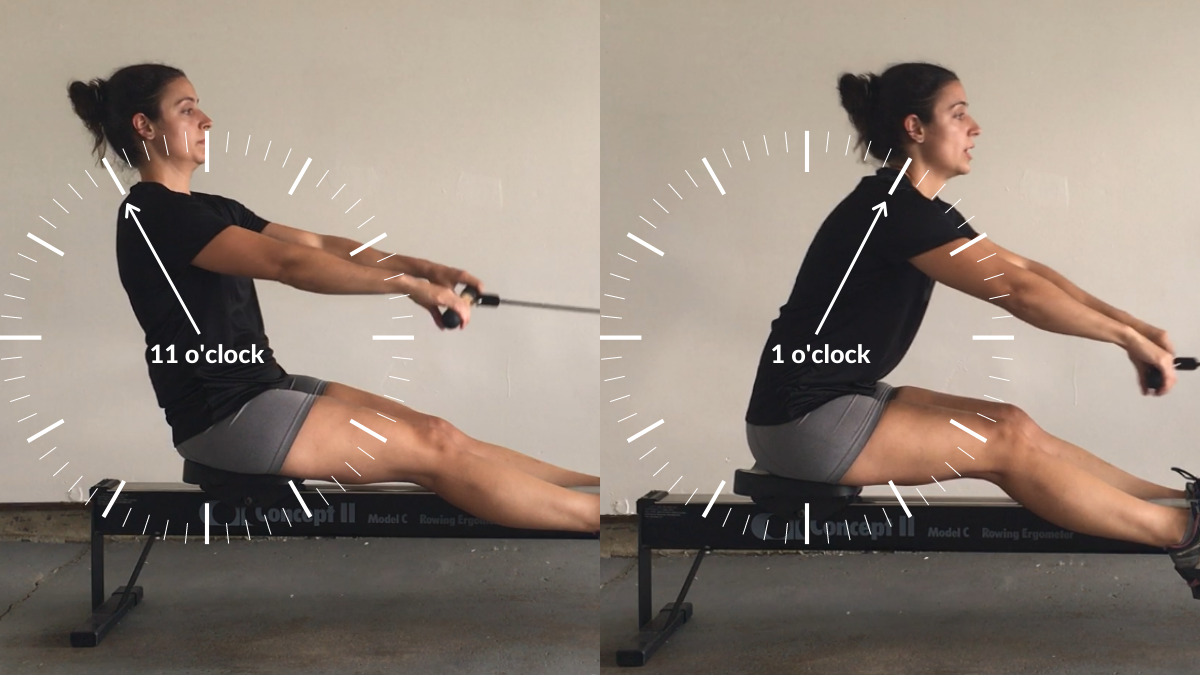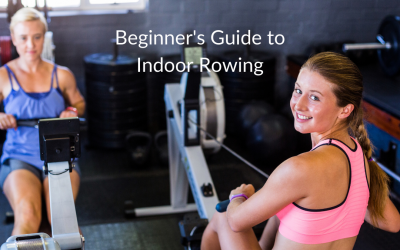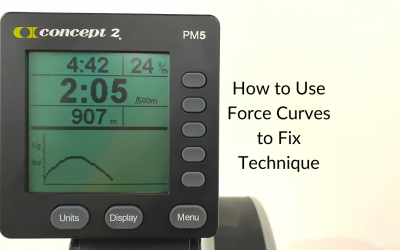6 Things a Rowing Coach Wants CrossFitters to Know
All right CrossFitters, I’m calling you out here. As a CrossFit level 1 trainer, I’ve seen so many different technique flaws and issues when it comes to rowing. I know that rowing is not something that is focused on in a WOD. However, rowing can really hurt your workout score if you don’t do it correctly. If you don’t row well, you can hurt yourself. Here are six things that as a rowing coach, you should know as a CrossFitter.
DON’T PUT THE DAMPER TOO HIGH
Very often, I see the damper set to a high number somewhere between 6 and 8. The damper setting is the setting on the side of the flywheel. The damper setting should be somewhere between 3 and 5.
And here’s why.
The damper setting on the flywheel acts much like the gears on a bike. When you’re riding a bike, you don’t always want to have the gear at the highest level. This is because you’ll get tired out very easily and it’s much harder to keep going at that high gear. Most often when we ride a bike, we set the gear somewhere just below the middle gear. This gear allows us to be able to have enough power behind our pedals but also allows us to keep moving.
The rowing machine is very similar. When the damper is set too high, the machine acts much more like a strength workout than a cardio workout. You are able to put a lot of power behind each stroke but you will get tired out very quickly. Even with the damper set to 4 or 5 you can still have a lot of power behind your stroke to get fast splits or more calories per hour.
The goal of rowing is to be efficient and consistent. When the damper is set too high it’s much harder to be consistent with your power and strokes. When the damper is set between 3 and 5, this is the best place to have the best of both worlds. You can be powerful here and keep rowing well for longer.
DON’T PULL YOURSELF UP TO THE CATCH
During a rowing workout, it’s easy to want to pull ourselves up to the catch (the front) to start our next stroke. However, the recovery in the rowing stroke is the best place to rest. Now, don’t misunderstand me. We should NOT be taking a pause on the way back up on our stroke.
What I mean is, we should float into the next stroke instead of pulling ourselves into the next stroke.
When you pull yourself up to the next rowing stroke you’re wasting a lot of energy. Next time you sit on the rowing machine take time to notice that the monorail is pitched forward. What this means is the seat will naturally slide to the front. Since the seat already wants to slide forward we shouldn’t need to waste our energy pulling ourselves up to the next stroke.
In order to get faster, more power needs to be applied to the machine. Giving yourself a small break in between each powerful stroke allows you to keep that higher amount of power. When you float up into the next stroke you’re able to give yourself a small break every single stroke you take. Then you can focus on having a hard drive and floating back up.
A good way to see if your drive is faster than your recovery is to count. A count of ONE on the drive, and TWO, THREE on the recovery. As your stroke gets faster, the recovery may not stay twice as long, but it should still stay longer than the drive.
You can also use words to practice having a longer recovery. So say “DRIVE” and on the way back up say “reeeee-cover”.
HIT FULL COMPRESSION TO SAVE YOUR KNEES
First, I need to define what full compression means. Full compression is when your shins are vertical to the ground at the catch. This is where we want to be every time we get to the front of our rowing stroke.
When full compression is missed you’re either too short or too far.
If you aren’t reaching full compression you’re missing out on some additional length in your rowing stroke. Coming up farther will allow you to get more out of your drive and be able to add more power to the machine.
If you need to lift your heels slightly at the catch to get there, that’s okay. As long as the first thing you do on the drive is to drive those heels back down. Just like in weightlifting, we want to have our full foot pressing down to generate power.
What’s even more common is over compressing at the catch. Over compression is when those shins go past vertical. This is a bigger deal because if you do this enough it can start to cause knee issues.
We also definitely don’t want our heels hitting our seat at the front of a rowing stroke.
What you can do to find where full compression is for you is to use a band. If you don’t have your own personal rowing machine I recommend using a band that is easily removed. You can wrap the band around the monorail right at the spot where your seat will hit it when your shins are vertical. This becomes a physical barrier to stop your seat from going too far.

PUSH, DON’T PULL
The rowing stroke is more about pushing than it is about pulling. We want to focus more on pushing with our legs than we do pulling with our arms.
This is because the legs account for 60% of the power in the rowing stroke. If you’re not using your legs you’re missing out on over half of the potential power you could be applying to the machine.
The beginning of the rowing stroke is much like a deadlift. Initially, we want to drive through our heels while bracing with our lats. The seat and the handle should move together since the shoulders and hips move together.
Then, once those legs are down we swing the body open and FINALLY, we pull in with the arms. Now for more about that body swing.
LEARN HOW TO SWING THE BODY
Can you imagine how little power you would get from a clean if you weren’t able to open up your hips? It wouldn’t be very much. At least not as much as you could by including that violent hip extension.
When you don’t use the body swing in the rowing stroke you are missing out on a large chunk of power. The body swing in the rowing stroke accounts for 30% of the power. If you’re missing that, you’re missing just under a third of the power that you could be generating.
What do I mean by body swing?
Once the legs drive down, then the body opens. If there was a clock face on the side of the body, the goal is to swing the body open from 1 o’clock to 11 o’clock (see picture below).

Once the body swings open, then we want to pull with the arms. On the way back up, those arms extend and the body rocks forward from 11 o’clock from 1 o’clock before the knees bend.
Most of the time it’s hard to get that body rock forward. It can be attributed to how you’re sitting on the seat or a lack of flexibility.
Some drills to help with the body swing are the pick drill, the reverse pick drill, and the cut the cake drill. Click on the links to see what those drills are about.
WORK ON BEING MORE CONSISTENT
Flying and dying in workouts also happens on the rowing machine. It’s easy to pull as hard as you can but that quickly fades to where you can’t keep that same pace.
To be efficient in rowing you want to work on being consistent.
To work on consistency I would start looking at the splits (/500m pace) or calories per hour that you pull. Every workout will use one of these two units. I would start paying attention to what you pull and try to keep that number as consistent as possible.
Don’t worry about getting 1 calorie per pull. Focusing on that will not help you improve your rowing. It’s more beneficial to keep track of your calories per hour and work to keep it consistent over the piece your doing as well as consistent throughout the workout.
If that means that you start off a little bit slower then that’s okay. The first step is knowing what you pull and then go from there.
If you’re a CrossFitter and this seems overwhelming, feel free to reach out to me to get your rowing technique looked at. I offer 30 min Zoom sessions and I can help you improve your rowing stroke so that you can get the rowing done in your WOD and get to the next movement.
Beginner’s Guide to Indoor Rowing
Getting a new workout machine is much like getting a new toy on Christmas. There’s so much excitement and anticipation to try it out! Many times we play with that new toy for a couple of days, and then it’s out of sight and out of mind. My guess is that’s not how you...
How to Use Force Curves to Fix Technique
You may know what a force curve is, and you might not. There’s no rule anywhere saying you need to know what your force curve looks like, or use it. However, it can be a useful tool to see how you’re applying power. Confused? No worries. We will get into what a force...
5 Signs You Need a Rest Day
Most of us are go, go, go. All the time. While it’s great to be motivated, it’s also dangerous to go until you drop. Being able to catch yourself before you get to that point is so important. It will save you so much mental headache in the long run. In terms of your...



